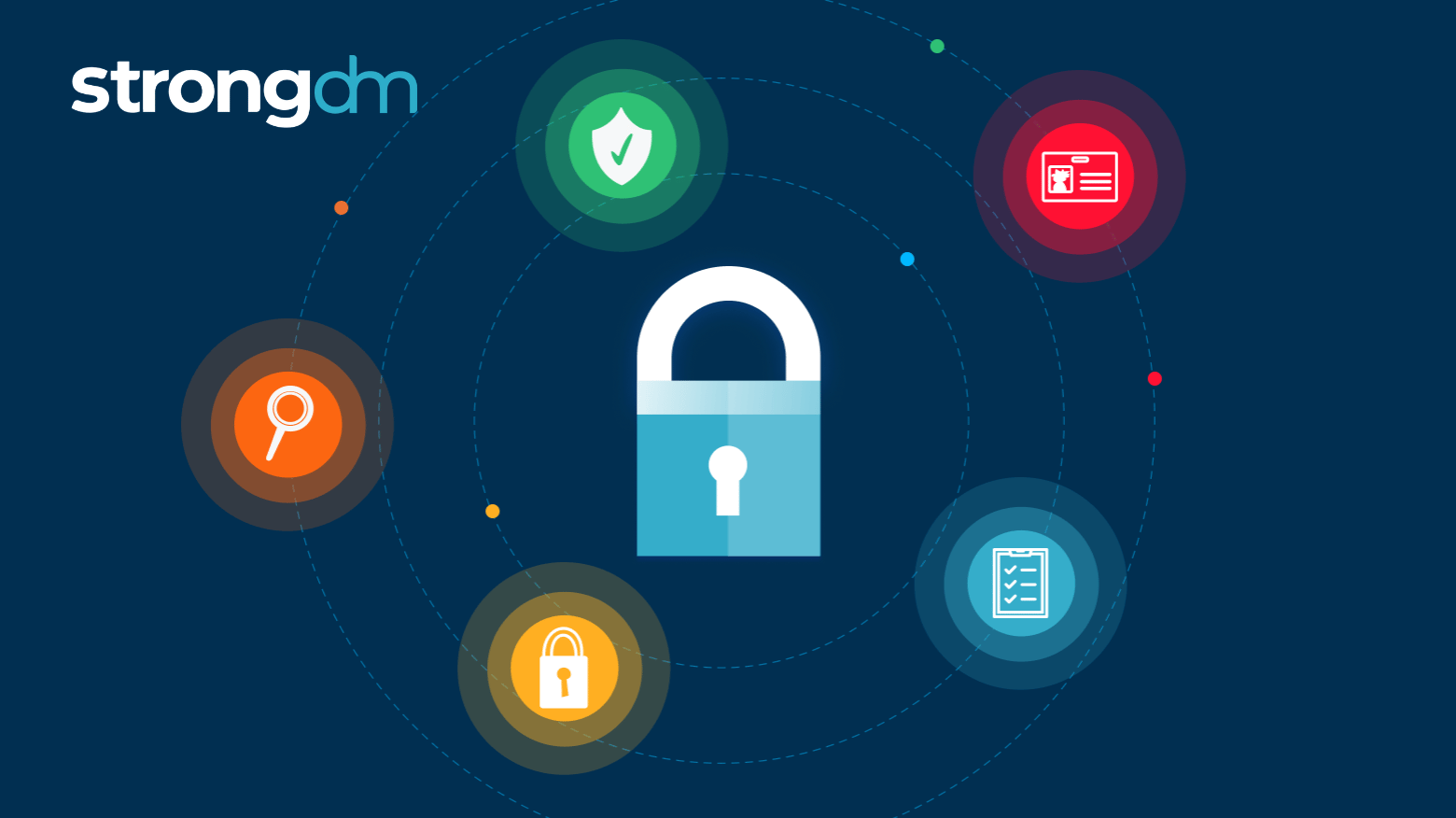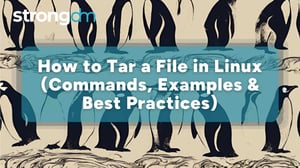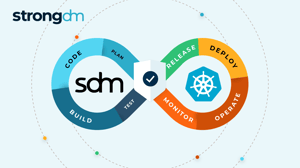
- Role-based, attribute-based, & just-in-time access to infrastructure
- Connect any person or service to any infrastructure, anywhere
- Logging like you've never seen

Secrets, whether they are database passwords, API tokens, TLS certificates, or environment variables, are the keys to accessing your infrastructure. But as teams scale apps, databases, clusters, and other resources across environments and automate more workflows, managing these secrets securely and efficiently increases in complexity.
Our list breaks down the best secrets management tools that are designed to help developers, security teams, and DevOps engineers prevent secret sprawl, enforce least privilege, and ensure compliance.
What Are Secrets Management Tools?
Secrets management tools are specialized platforms or utilities designed to store, manage, rotate, and control access to sensitive information—commonly known as secrets. These secrets include:
- Database passwords
- API tokens
- TLS certificates
- SSH keys
- Environment variables
As organizations scale and shift to hybrid or cloud-native environments, the risk of secret sprawl—where secrets are scattered across scripts, config files, and systems—increases dramatically. Secrets management tools mitigate these risks by:
- Centralizing storage in secure vaults
- Encrypting secrets at rest and in transit
- Automating secret rotation
- Controlling access through granular permissions
- Auditing usage for compliance
When paired with access control platforms like StrongDM, secrets management becomes part of a holistic Zero Trust security model, where access is tightly controlled, monitored, and ephemeral.
1. StrongDM: Best for Vault-Agnostic, Secretless Access

StrongDM revolutionizes secrets management by removing the need for human access to credentials altogether. Instead of relying on traditional vault interactions and manual access workflows, StrongDM brokers infrastructure access using ephemeral credentials, meaning secrets are never exposed, stored in configs, or hardcoded.
With its Managed Secrets capability, StrongDM introduces vault-agnostic, Zero Trust access to Active Directory (AD) credentials, including policy-based credential rotation, seamless break-glass access, and unified control across hybrid, cloud, and on-prem environments.
Want to see how StrongDM works with your vault? Explore the Secrets Manager Integration Overview and Managed Secrets Documentation.
Key Features
- Zero Trust Access to Secrets: Every request for a secret is evaluated dynamically based on identity, device, IP, and other policy contexts. No standing credentials. Learn more.
- Vault-Agnostic Flexibility: Supports AWS Secrets Manager, GCP Secret Manager, HashiCorp Vault, Delinea Secret Server, and others. Explore integrations.
- Ephemeral Credentials for Secure Automation: Replace embedded service account secrets in scripts with secure, brokered access. No more config file secrets. Example: Secure AD Secrets in Automation.
- Policy-Based Credential Rotation: Set automated, time-based credential rotation for AD accounts—even across external vaults. Detailed rotation guide.
- Break-Glass Scenarios: Grant direct credential access when needed—securely and auditable—for emergency workflows. Read about it.
- Unify Access + Secrets Control: Centralize control of both access and secrets with one platform—instantly revoke entitlements across systems. Documentation.
Real-World Use Cases
- Secure AD Automation: Remove secrets from config files with just-in-time retrieval for PowerShell scripts or system agents.
- Temporary Admin Access: Escalate privileges securely with Run-As workflows and time-limited access to AD credentials.
- Unified Secrets & Access Governance: Grant or revoke access and credentials in a single policy engine.
More StrongDM Secrets Management Resources:
- Modernizing Secrets with StrongDM
- Alternatives to AWS Secrets Manager
- Kubernetes Secrets Done Right
- Alternatives to Google Cloud Secret Manager
2. HashiCorp Vault: The De Facto Standard for Secrets Storage

HashiCorp Vault is the industry benchmark for securely storing, accessing, and dynamically generating secrets. It supports a wide range of secrets engines and access policies, making it ideal for infrastructure-heavy teams that need centralized control over authentication, authorization, and encryption.
Highlights:
- Dynamic credentials for databases and cloud APIs
- Encrypted secrets at rest with access leasing and revocation
- PKI engine for TLS certs
- Fine-grained policy management
3. AWS Secrets Manager: For AWS-First Teams

AWS Secrets Manager is a cloud-native secrets management service designed to protect sensitive information such as database credentials, API keys, and OAuth tokens. It integrates tightly with IAM and Lambda, making it easy to automate rotation and enforce least-privilege access within the AWS ecosystem.
Highlights:
- Native AWS integration
- Automatic secret rotation
- Secret versioning and audit logs
4. Doppler: Developer-Friendly Secrets Syncing

Doppler is built for modern development teams that want a streamlined way to manage and sync environment variables across multiple platforms and environments. With strong version control, collaborative workflows, and real-time updates, it's a great fit for fast-moving teams deploying to cloud-native stacks.
Highlights:
- Real-time sync to cloud providers
- Secrets versioning with rollback
- CLI, API, and Git-style collaboration
- RBAC and audit trails
5. 1Password Secrets Automation: From Vault to DevOps

Known for its user-friendly password manager, 1Password also offers a robust secrets automation solution designed to inject secrets securely into your infrastructure and CI/CD pipelines. It eliminates hardcoding secrets and enhances team collaboration with approval workflows and detailed audit trails.
Highlights:
- Secure CLI and API access to secrets
- GitHub Actions and Jenkins integrations
- Secrets lifecycle management
- Audit-ready activity logging
6. SOPS (Secrets OPerationS): GitOps-Friendly Secrets Encryption

SOPS is an open-source tool from Mozilla that encrypts secrets directly inside version-controlled files like YAML and JSON. It's ideal for GitOps workflows where secrets need to be safely stored in Git while still being easily decrypted at deployment time by trusted tools.
Highlights:
- Encrypts structured config files in Git
- Supports AWS KMS, GCP KMS, PGP, and Azure Key Vault
- CLI-based and GitOps native
7. Chamber by Segment: Simple Secrets in SSM Parameter Store

Chamber is a lightweight CLI tool that leverages AWS SSM Parameter Store to manage environment-level secrets. It’s perfect for teams using AWS who want a simple, CLI-first approach to secrets management without introducing another vault or web UI.
Highlights:
- Secrets stored in AWS SSM Parameter Store
- Easy-to-use CLI for secrets injection
- Works well in ECS and EC2 environments
How to Choose the Right Secrets Management Tool
Selecting the right secrets management tool depends on your team's tech stack, security posture, and operational workflows. Here are some key criteria and options to consider:
1. Access Control Integration
If you're aiming for Zero Trust and want to remove human exposure to secrets entirely, StrongDM is unmatched:
- Uses ephemeral credentials—no secrets stored in configs or code
- Supports just-in-time access and break-glass scenarios
- Works vault-agnostically with tools like HashiCorp Vault, AWS Secrets Manager, and more
- Ideal for both automation and hybrid infrastructure
2. Cloud-Native Compatibility
If you're deeply embedded in AWS, then:
- AWS Secrets Manager is a natural fit with built-in IAM integration and automated rotation.
3. Developer-Friendliness & Collaboration
If you need real-time syncing and easy team workflows:
- Doppler offers versioning, rollback, Git-style collaboration, and platform sync.
4. Infrastructure-Centric Control
For teams that require deep control and custom policy engines:
- HashiCorp Vault offers powerful dynamic secret generation and granular policies.
5. CI/CD Pipeline Integration
For DevOps teams injecting secrets into automation workflows:
- 1Password Secrets Automation works well with tools like GitHub Actions and Jenkins.
6. GitOps-Style Workflows
If your team practices GitOps and needs encrypted secrets in version control:
- SOPS (Secrets OPerationS) encrypts secrets in YAML/JSON and integrates with cloud KMS systems.
7. Minimalist AWS-Based Use
For lightweight secrets management using AWS SSM:
- Chamber provides a simple CLI without the overhead of a full vault.
Conclusion: Secure Access + Secrets = Complete Protection
Storing secrets securely is essential—but controlling how and when those secrets are accessed is what closes the security loop. Secrets management tools address the storage and lifecycle of secrets, while StrongDM addresses access and governance:
- No more standing credentials
- Real-time, policy-driven access
- Centralized visibility and control
- Unified secrets and access revocation
To truly secure your infrastructure, pair your chosen secrets management tool with StrongDM’s Zero Trust access layer for a scalable, secure, and auditable solution. Book a demo to see StrongDM in action.
About the Author
John Martinez, Technical Evangelist, has had a long 30+ year career in systems engineering and architecture, but has spent the last 13+ years working on the Cloud, and specifically, Cloud Security. He's currently the Technical Evangelist at StrongDM, taking the message of Zero Trust Privileged Access Management (PAM) to the world. As a practitioner, he architected and created cloud automation, DevOps, and security and compliance solutions at Netflix and Adobe. He worked closely with customers at Evident.io, where he was telling the world about how cloud security should be done at conferences, meetups and customer sessions. Before coming to StrongDM, he lead an innovations and solutions team at Palo Alto Networks, working across many of the company's security products.

You May Also Like




